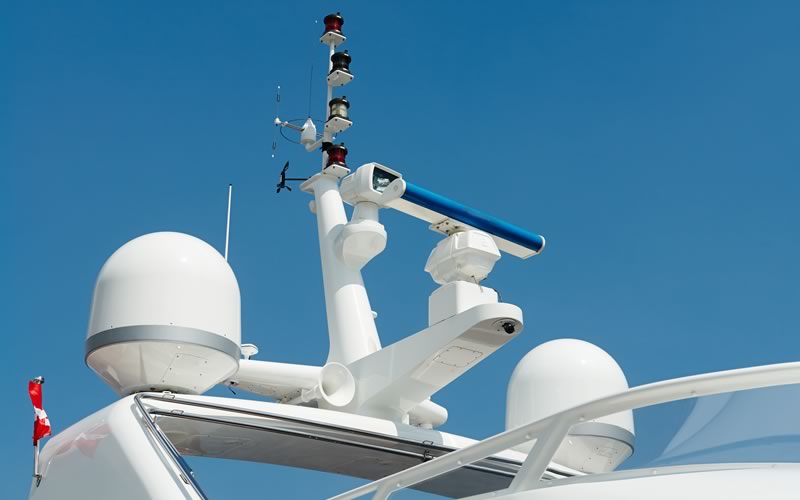Marine radars are gadgets that are used to help navigate ships through seas, rivers and oceans. Technically speaking, the radar is made possible by electromagnetic waves. They can identify geological factors like range, speed, direction and altitude and in relation to all approaching objects, including other ships, islands or approaching weather systems. Marine radars emit electromagnetic waves which are then reflected by the target and then returned to the source and amplified. Radar is able to pick up data on objects that are usually not discernible by the human eye or ear.Marine Information And Navigation Systems
The cost of marine radars can vary. Some cost as low as $500 while others may soar to three grand. What are some of the high-tech features that increase the selling price? Among others, high resolution displays, auto tuning, True Motion Display (which can discern the difference between stationary objects floating and things that are moving) and devices with enhanced performance or expandability. Other advents in marine radars technology include radars that are equipped to work with GPS systems, fish finders and networks.
What should you consider when deciding on marine radars? First, you have to consider what size of boat is appropriate. After all, radars come in various configurations and sizes and must match the size of your craft. You also have to consider transmitter output, since this directly affects the performance level of your radar, even in difficult conditions like fog or rain. You also have to consider the beam angle, which is directly related to the length of the antenna you are putting up. The longer your antenna, the more you can expect from your unit's resolution and accuracy in detection.
Another issue is the display in marine radars. Just as in television, in marine navigation you have to choose between CRT and LCD displays. CRT stands for Cathode Ray Tube while LCD stands for Liquid Crystal Display. CRT displays have high contrast in average light and tends to show bright targets. These screens are also affected by bright sunlight. LCDs are smaller in size, yet offer larger flat screen displays. The contrast on an LCD screen actually increases when it is back lit, so the navigational view will not be hindered by direct sunlight.
Other considerations include the type of software you get with your marine radar
system, which should be easy to install and easy to read in real time. Some of the best software programs offer a plug and play installation and extra-fast chart drawing abilities. Viewing the display while standing in the sun can be a problem, so look for a system that offers an AR-coated LCD or CRT screen. Marine Satcom Canada
Buying marine radars can help you plan your journey, keep you safe and keep your travel plans organized. Such a device can even help make your expedition more enjoyable and successful by alerting you to potential problems and keeping you on track. For more information on marine radars try looking up these gadgets online through marine retail stores or searching for the product by name.







